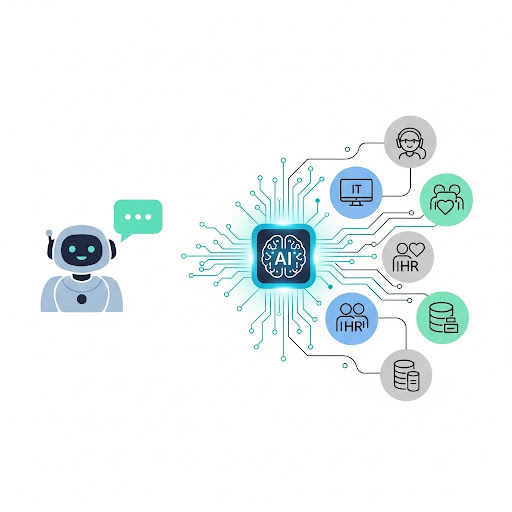Stop Playing AI Bingo: The Swim Lane Method for Finding Real Business Value
- James Russo
- Aug 4
- 5 min read

It's Monday morning, and you're sitting in yet another "AI strategy" meeting. Someone mentions ChatGPT. Another person throws out "machine learning." A third suggests you need to "leverage AI to optimize synergies" (whatever that means). By the end of the hour, you've got a whiteboard full of buzzwords and exactly zero actionable ideas.
Sound familiar?
Here's the problem: Most companies approach AI like they're playing bingo. They hear about a cool AI tool, get excited, and immediately start looking for problems it can solve. It's backwards thinking that leads to expensive solutions in search of problems—and product managers know exactly how that story ends.
What if I told you there's a better way? A method that starts with your actual business processes and systematically uncovers where AI can create real, measurable impact?
Welcome to the swim lane methodology—the anti-buzzword approach to AI strategy that actually works.
The "Throw AI at Everything" Problem
Before we dive into the solution, let's acknowledge the elephant in the room: AI initiative failure rates that would make a startup founder weep.
The Classic Mistakes:
Solution Shopping: "We need AI! What should we use it for?"
Shiny Object Syndrome: Chasing the latest AI tool without understanding the underlying business need
The Pilot Purgatory: Endless proof-of-concepts that never see production
ROI Roulette: Hoping AI will magically improve efficiency somewhere, somehow
The Result: Frustrated stakeholders, blown budgets, and a healthy dose of AI skepticism that makes future projects even harder to get approved.
The fundamental issue? Most companies start with the technology instead of starting with the work.
The Swim Lane Solution: AI Strategy That Actually Makes Sense
Here's the radical idea: Instead of asking "How can we use AI?", start by asking "How does work actually flow through our organization?"
The swim lane methodology flips the script. You map out your existing business processes first—every step, every decision point, every handoff between departments. Then, and only then, do you systematically evaluate where AI can create genuine value.
Think of it like this: You wouldn't redesign your office layout without understanding how people actually move through the space. Why would you redesign your processes with AI without understanding how work actually flows?
Step 1: Draw the Real Picture (Not the Org Chart Version)
Start with a process flow diagram using swim lanes—those horizontal sections that show which department or role owns each step. But here's the key: Map how things actually work, not how the procedure manual says they should work.
Pro tip: If your process map looks clean and linear, you're probably missing something. Real business processes have loops, exceptions, and those informal workarounds that Janet from accounting invented because "the system doesn't handle this edge case."
What you're looking for:
Handoffs between departments (prime spots for delays and miscommunication)
Decision points (where human judgment is currently required)
Information creation or processing steps (where content gets generated, summarized, or transformed)
Repetitive tasks (the "I can't believe we're still doing this manually" moments)
Step 2: The Three-Question AI Filter
Once you have your process mapped, walk through each step and ask these three simple questions. This is where the magic happens—and where most AI strategies fail because they skip this systematic evaluation.
Question 1: "Is this a Classification Problem?"
Translation: Could an AI sort, categorize, or route this better than humans?
The Business Impact: Faster processing, consistent decisions, automatic routing
Real Examples:
Customer support tickets getting routed to the right specialist
Expense reports getting flagged for different approval workflows
Incoming resumes being ranked by fit for specific roles
Contract clauses being tagged by risk level
The Sniff Test: If someone currently has to read something and decide "which bucket does this go in?", you've probably found a classification opportunity.
Question 2: "Is this a Prediction Problem?"
Translation: Could an AI spot patterns in historical data to forecast what's likely to happen?
The Business Impact: Proactive decisions, risk mitigation, resource optimization
Real Examples:
Predicting which customers are likely to churn (so you can intervene)
Forecasting demand spikes (so you can staff appropriately)
Identifying equipment likely to fail (so you can do preventive maintenance)
Estimating project completion dates (so you can manage expectations)
The Sniff Test: If someone currently looks at data and makes educated guesses about the future, you've probably found a prediction opportunity.
Question 3: "Is this a Content Generation Problem?"
Translation: Could an AI create, summarize, or draft content based on inputs and templates?
The Business Impact: Faster content creation, consistent messaging, reduced manual effort
Real Examples:
Auto-generating status reports from project data
Creating personalized email responses based on customer history
Summarizing long meeting transcripts into action items
Drafting contract language based on deal parameters
The Sniff Test: If someone currently has to write, summarize, or create content following predictable patterns, you've probably found a generation opportunity.
The Visual Communication Superpower
Here's why this methodology works so well with business stakeholders: You're not asking them to understand neural networks or transformer architectures. You're showing them their own processes and pointing to specific steps where AI can help.
The Magic Moment: When you can literally point to a box in the swim lane diagram and say, "Right here—this is where Sarah spends three hours every Friday manually categorizing customer feedback. AI could do this in three minutes with higher accuracy."
Suddenly, AI isn't some abstract technology. It's a concrete solution to a specific pain point that everyone already understands and feels.
Avoiding the Common Pitfalls
The "Everything Looks Like a Nail" Trap: Just because something could be automated doesn't mean it should be. Some steps require human judgment, creativity, or relationship-building that AI can't replicate.
The "Data Desert" Reality Check: AI needs data to work. If you've identified a perfect classification problem but have no historical examples to train on, you've found a great future opportunity—not an immediate one.
The "Perfect Solution" Paralysis: Don't let perfect be the enemy of good. A 70% improvement in a high-volume process often delivers more value than a 95% improvement in something that happens twice a month.
The "Technical Debt" Elephant: Sometimes the biggest barrier isn't AI capability—it's that your current systems can't easily integrate with AI tools. Factor this into your prioritization.
The Prioritization Framework That Actually Works
Once you've identified opportunities, you need to prioritize them. Here's the framework that gets results:
High Impact, Low Complexity: The quick wins that build credibility and momentum
High Impact, High Complexity: The transformation projects that require serious commitment but deliver serious results
Low Impact, Low Complexity: The nice-to-haves that you might tackle if you have extra resources
Low Impact, High Complexity: The "interesting technical challenges" that belong in the "someday maybe" pile
Why This Approach Gets Buy-In
Business stakeholders love this methodology because:
It's Visual: They can see exactly where improvements will happen It's Concrete: Every AI solution maps to a specific business problem It's Measurable: You can quantify the impact of each improvement It's Realistic: It acknowledges current constraints and capabilities It's Strategic: It connects AI initiatives to actual business processes
Product managers love it because it gives them a systematic way to evaluate AI opportunities without getting lost in the technical weeds or falling victim to the latest AI hype cycle.
The Bottom Line: Work Smarter, Not Harder
The companies succeeding with AI aren't necessarily the ones with the biggest AI budgets or the fanciest tools. They're the ones that took the time to understand their processes first and then applied AI strategically to the biggest opportunities.
Stop playing AI bingo. Stop chasing shiny objects. Stop hoping AI will magically solve problems you haven't clearly defined. Instead, map your processes, ask the three questions, and build AI solutions that actually move the needle on business outcomes.
Because at the end of the day, nobody cares how sophisticated your AI is. They care whether it makes their work easier, faster, or more effective.
And that's exactly what the swim lane methodology delivers.
Ready to stop playing AI bingo and start finding real opportunities? Grab a whiteboard, gather your team, and start mapping one critical business process. You might be surprised by what you discover when you look at your work through the AI lens—systematically.



Comments